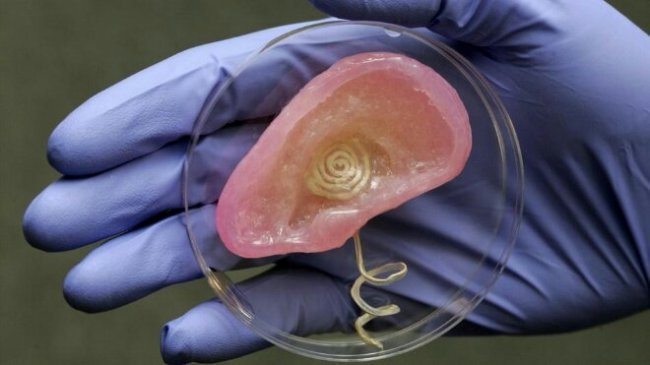Scientists at Princeton University have designed a bionic ear that can hear better than human ears. And get this: It was printed using an off-the-shelf 3D printer.
We’ve heard of 3D printers someday building human organs before, but what’s noteworthy about this project is this printed ear intertwines embedded electronics. These Princeton researchers basically 3D-printed cells and nanoparticles, and then combined a small coil antenna with cartilage to create this “bionic” ear, according to the university.
The result was a fully-functional organ that can hear radio frequencies a million times higher than our human ears, lead researcher Michael McAlpine told Mashable.
“The way that our ear hears now is we pick up acoustic signals and then we convert those into electrical signals that go to our brain,” said McAlpine, who is an assistant professor of mechanical and aerospace engineering at Princeton. “What this ear does is it has this electronic coil on it and it picks up electronic signals directly.”









